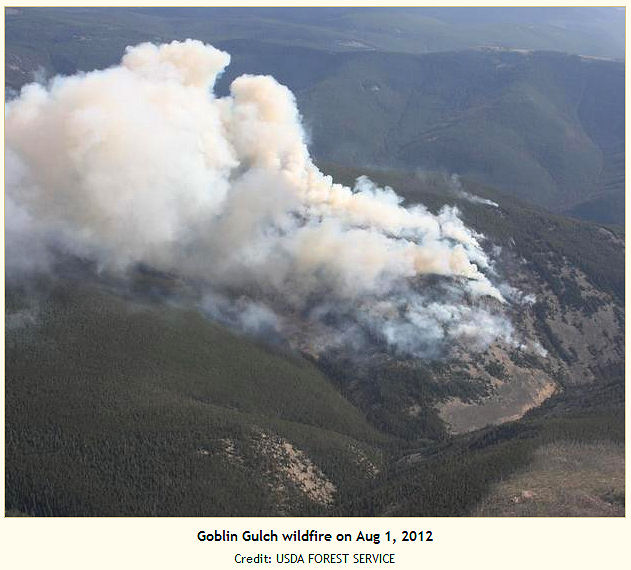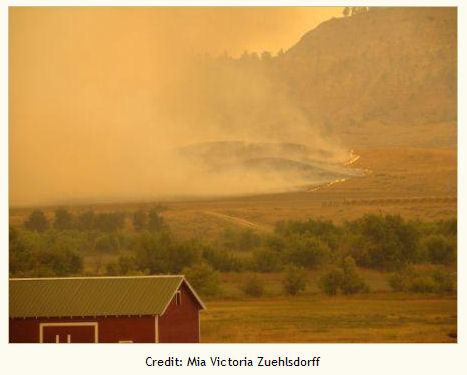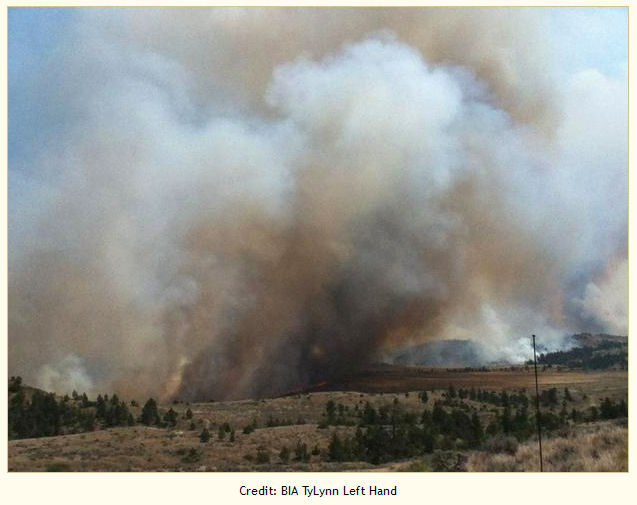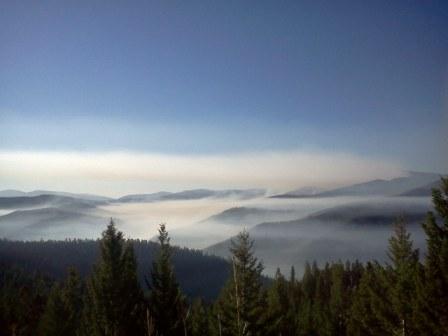The Prisoner Lake Fire in the Bob Marshall Wilderness in western Montana is being managed for suppression; the fire was reported on July 30 on the Spotted Bear Ranger District. Natural rock barriers have helped contain the spread of the fire, which is estimated at 3333 acres. A number of spots outside the main perimeter were detected by aerial recon on Thursday in the head of Brownstone Creek. A crew of 8 firefighters is working on the half-acre spot fires and mopping up.
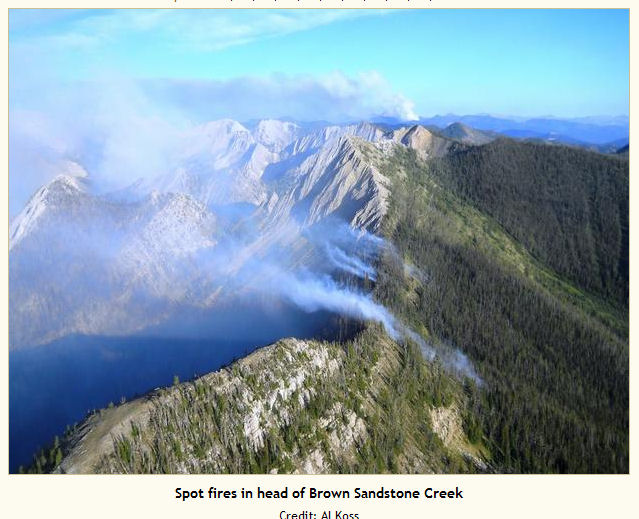 The fire’s about 25 miles east of Condon. Trails in the area have been closed for public safety. Closed trails on the Flathead National Forest are: Trail #138 Molly Creek Trail, from the junction with the White River Trail #112 to White River Pass; Trail #380 South Fork of White River, from the junction with Trail #138 to its end; and Trail #626 Haystack Mountain, from the junction with Trail #138 to Haystack Mountain. Closed trails on the Lewis and Clark National Forest: Trail #211 Indian Creek, from White River Pass to the junction with Trail #203, West Fork of the South Fork Sun River.
The fire’s about 25 miles east of Condon. Trails in the area have been closed for public safety. Closed trails on the Flathead National Forest are: Trail #138 Molly Creek Trail, from the junction with the White River Trail #112 to White River Pass; Trail #380 South Fork of White River, from the junction with Trail #138 to its end; and Trail #626 Haystack Mountain, from the junction with Trail #138 to Haystack Mountain. Closed trails on the Lewis and Clark National Forest: Trail #211 Indian Creek, from White River Pass to the junction with Trail #203, West Fork of the South Fork Sun River.
An area closure has been issued for the areas around the Elbow Pass Complex to the south and east of the Prisoner Lake Fire.

